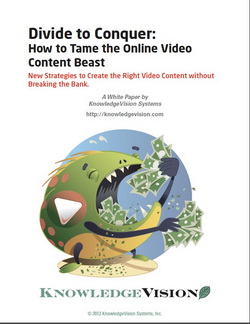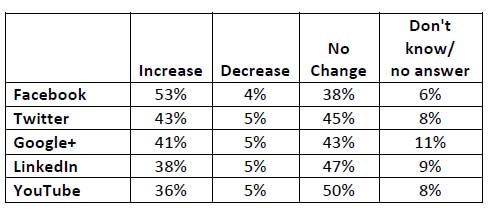On smartphones and tablets, people are viewing short, online videos everywhere they go. So, does everyone who searches for products online expect to see video content on every website they visit?
Maybe not yet, but they will soon. Research has shown that organizations that include informative, but casual videos about their products, services, and capabilities not only get more traffic, but they also keep people on their websites three times longer. Watching video content is a more passive than reading. You simply sit back, look, and listen.
Online video provides a fast way to demonstrate the features of certain products, show the personality and expertise of company personnel, and let people around the world tour your facilities. Video also offers a cost-effective way for companies to provide better employee training and customer support for their expanding range of products and services.
Why should you care?
If you are a writer or designer, knowing how to cost-effectively produce short videos can come in handy—either to promote your own products and services or to better serve publishers and corporate clients.
Photographers who can shoot high-res video can create new niche businesses for themselves by understanding the types of short videos that businesses of all sizes want and need. For example, pro photographer Michael Soo recently filmed video testimonials for real-estate agent Terel Beppu. Jack Affleck is promoting his ability to produce “action” videos of moving subjects.
If you are an artist, creating videos about your work can help collectors better understand who you are as an artist and how and why you created certain pieces.
What about the expense?
 To gain some perspective on the wide range of online videos that are being created at all budget levels, download the 12-page white paper from Knowledge Vision Systems. Entitled “Divide to Conquer: How to Tame the Online Video Content Beast,” the white paper acknowledges that “Demand for online videos is growing much faster than budgets to produce it.”
To gain some perspective on the wide range of online videos that are being created at all budget levels, download the 12-page white paper from Knowledge Vision Systems. Entitled “Divide to Conquer: How to Tame the Online Video Content Beast,” the white paper acknowledges that “Demand for online videos is growing much faster than budgets to produce it.”
The white paper advises companies to budget for three types of videos: showpiece, workhorse, and long-tail. (The long-tail options help you get started in online video without a lot of money or if you freeze up and look painfully awkward in front of a camera.)
Showpiece videos. These are the splashy videos that bigger companies produce for the front door of their websites, for trade-show booths, and for sales meetings. They don’t need to be updated regularly and should be produced by a video-production house.
Workhorse videos. These are the crisp, clear videos that explain a company’s most important products, introduce key technologies, and move prospective customers further along in the buying process. These videos should be focused and authoritative, with a style that conveys the personality of the organization.
Long-tail videos. These are simple, low-cost videos that can combine PowerPoint presentations, product animations, or screen grabs with voice-over narrations. In a corporate environment, they focus on answering specific questions or educating customers about a specific process. But they can also be produced by individuals with expertise in a specific subject area.
The white paper emphasizes that “Creating video for any type of business communication doesn’t have to be hard. And it doesn’t need to be expensive…When you start to rethink your definition of online video, explore new tools, and leverage the value of your internal subject matter experts and existing content, you can tame the video content beast.”
Knowledge Vision is a flexible, online video presentation platform. Synchronizing video, presentation slides, animations, just-in-time footnotes, and virtual handouts, Knowledge Vision presentations can be embedded within any website for on-demand, live, and mobile applications.
Knowledge Vision Systems is also beta-testing Knovio, a system through which individuals can bring online PowerPoint presentations to life by adding webcam video or voice-over narratives.
LINKS
Knowledge Vision Systems
Divide to Conquer: How to Tame the Online Video Content Beast
Knovio: Personal Platform for Creating and Sharing Video Presentations


